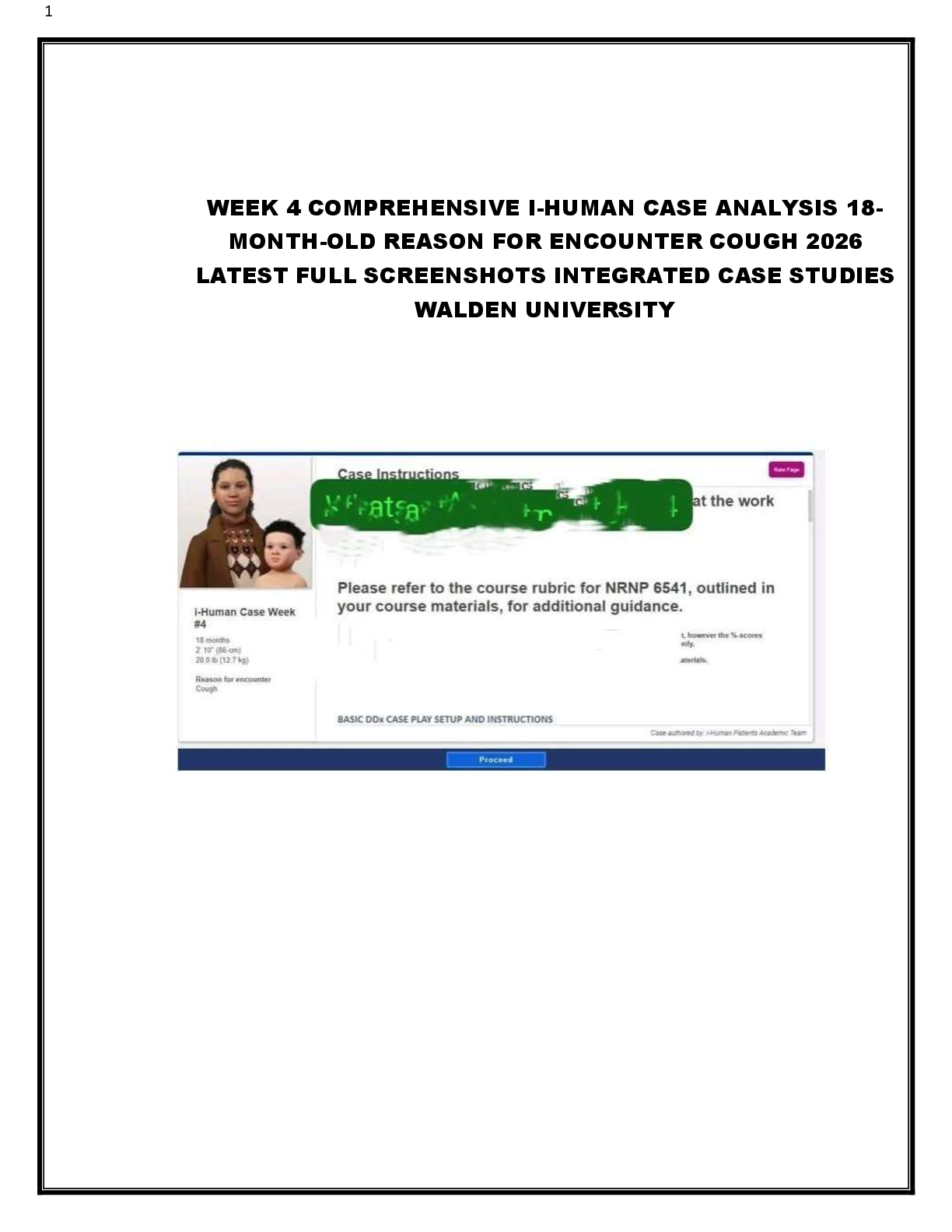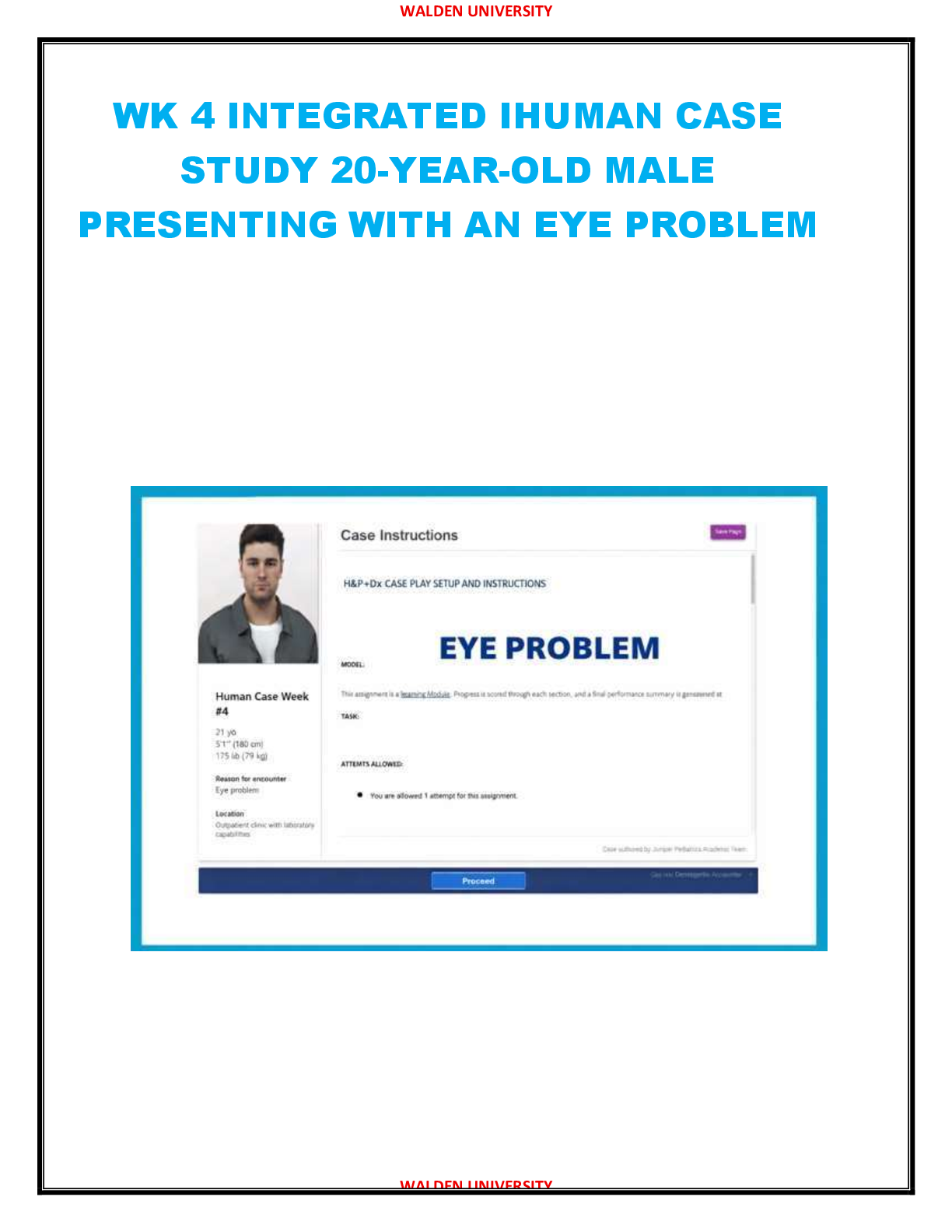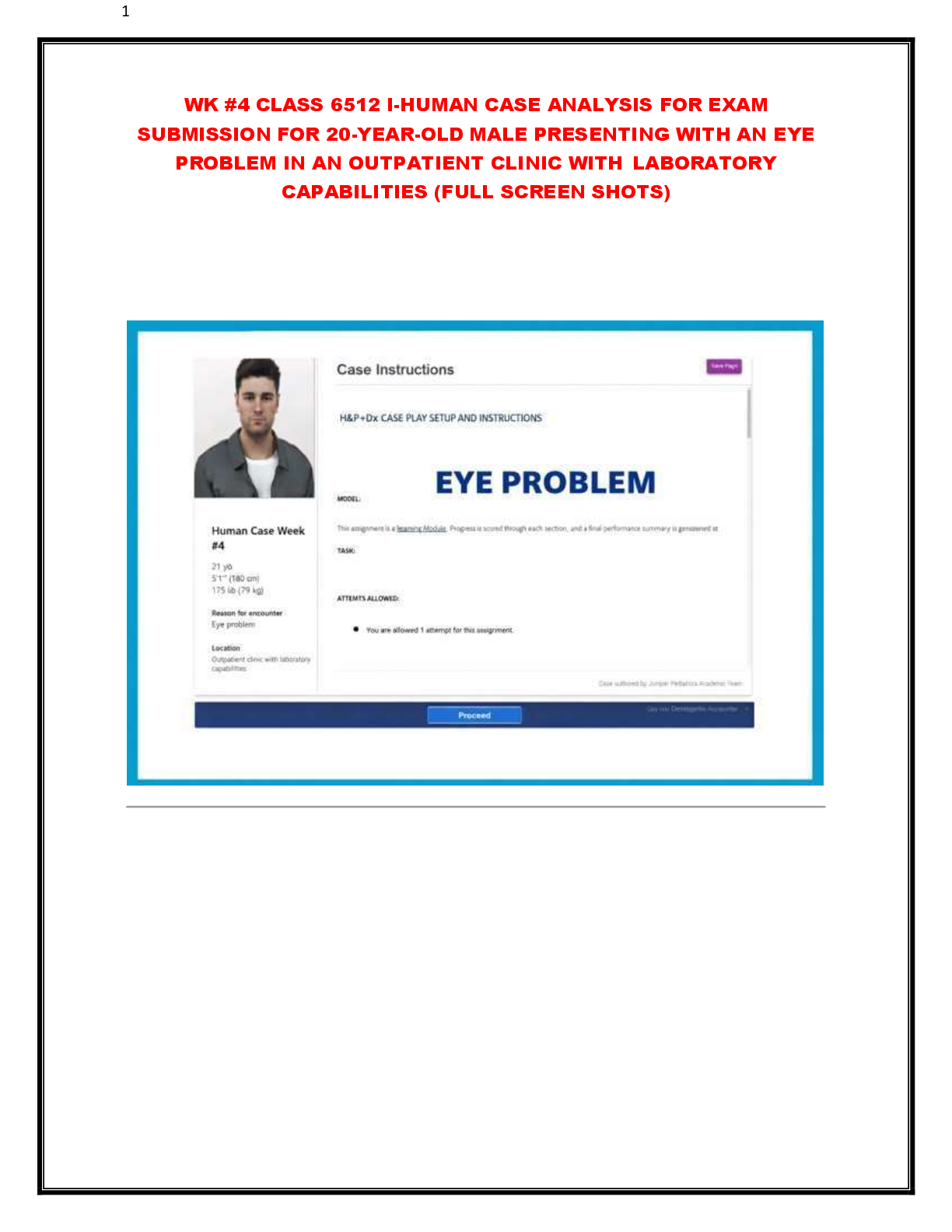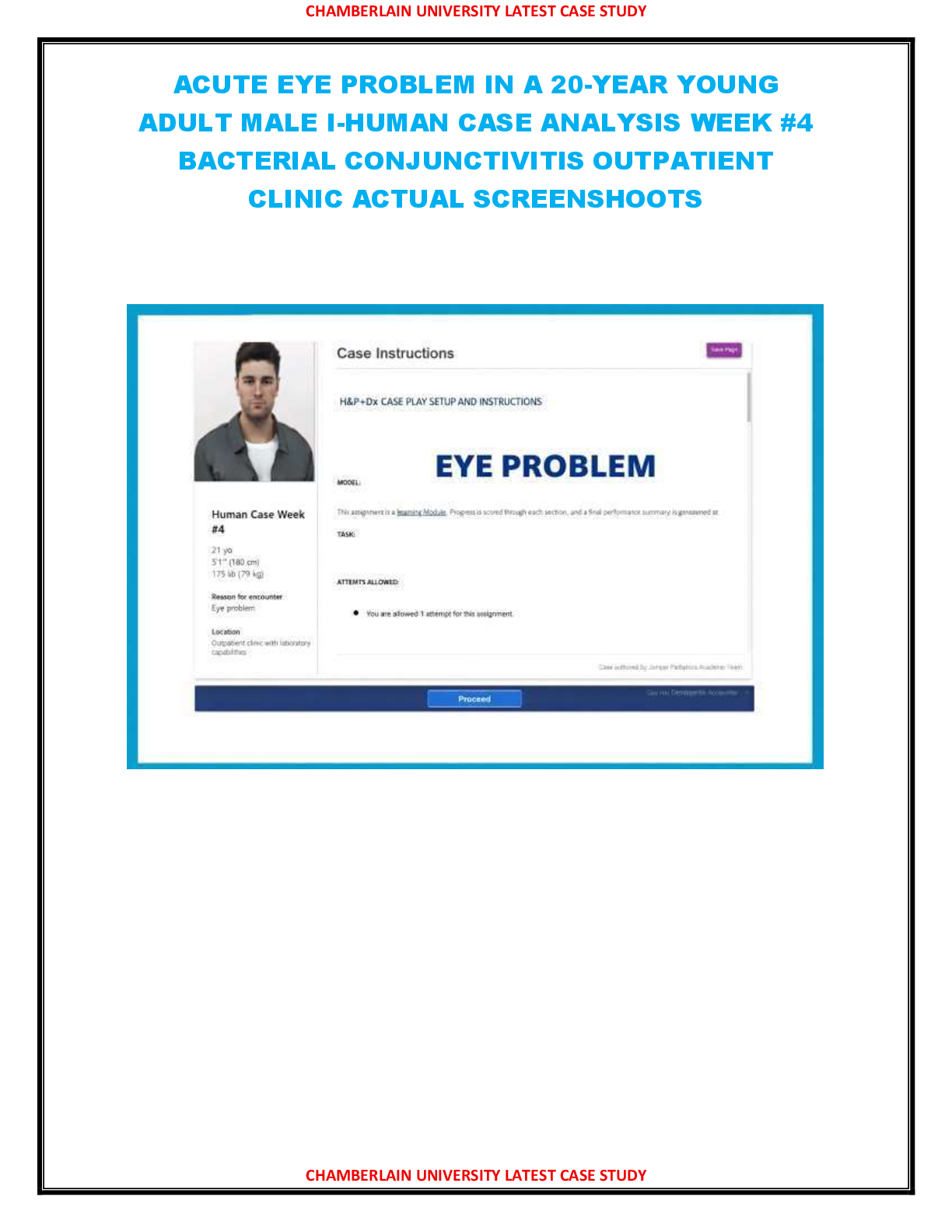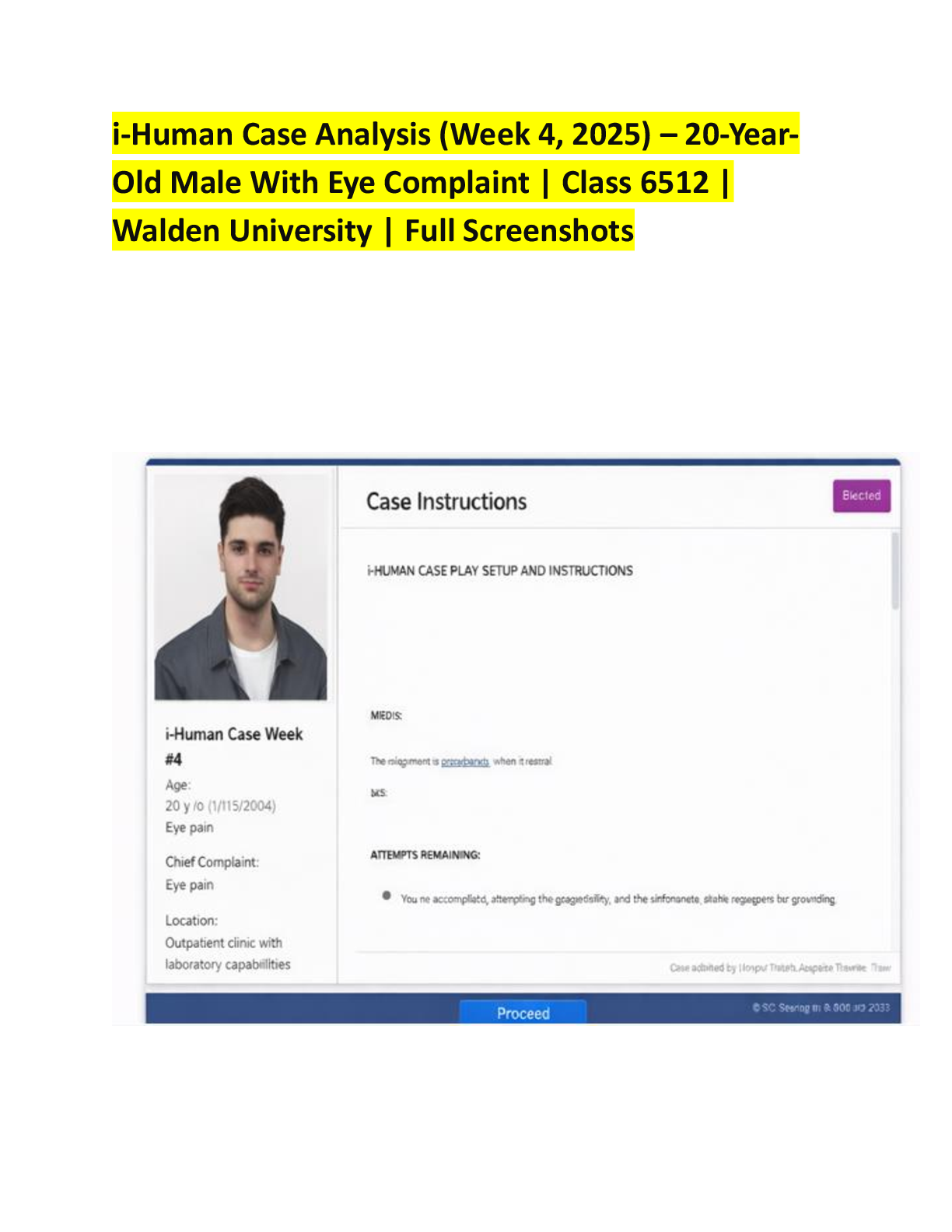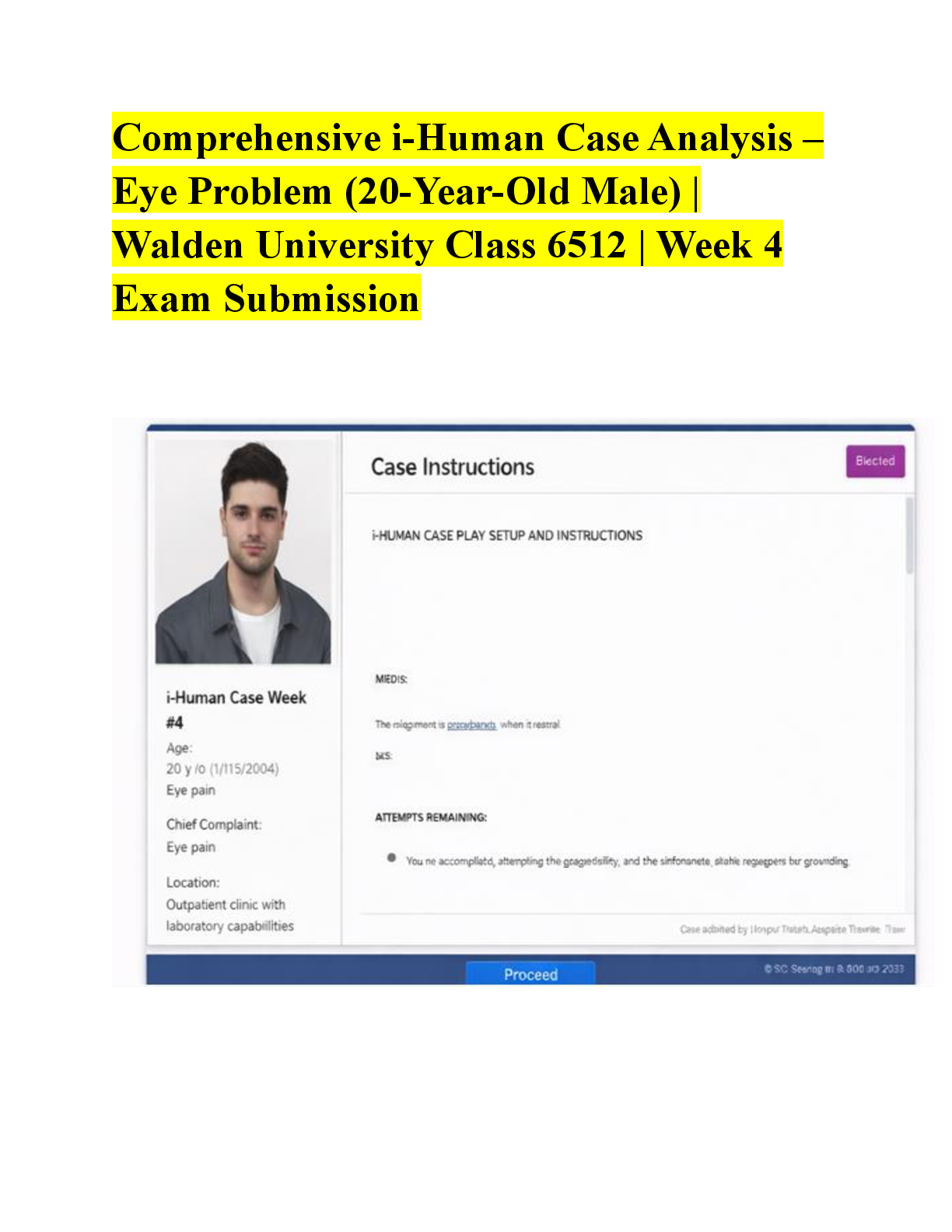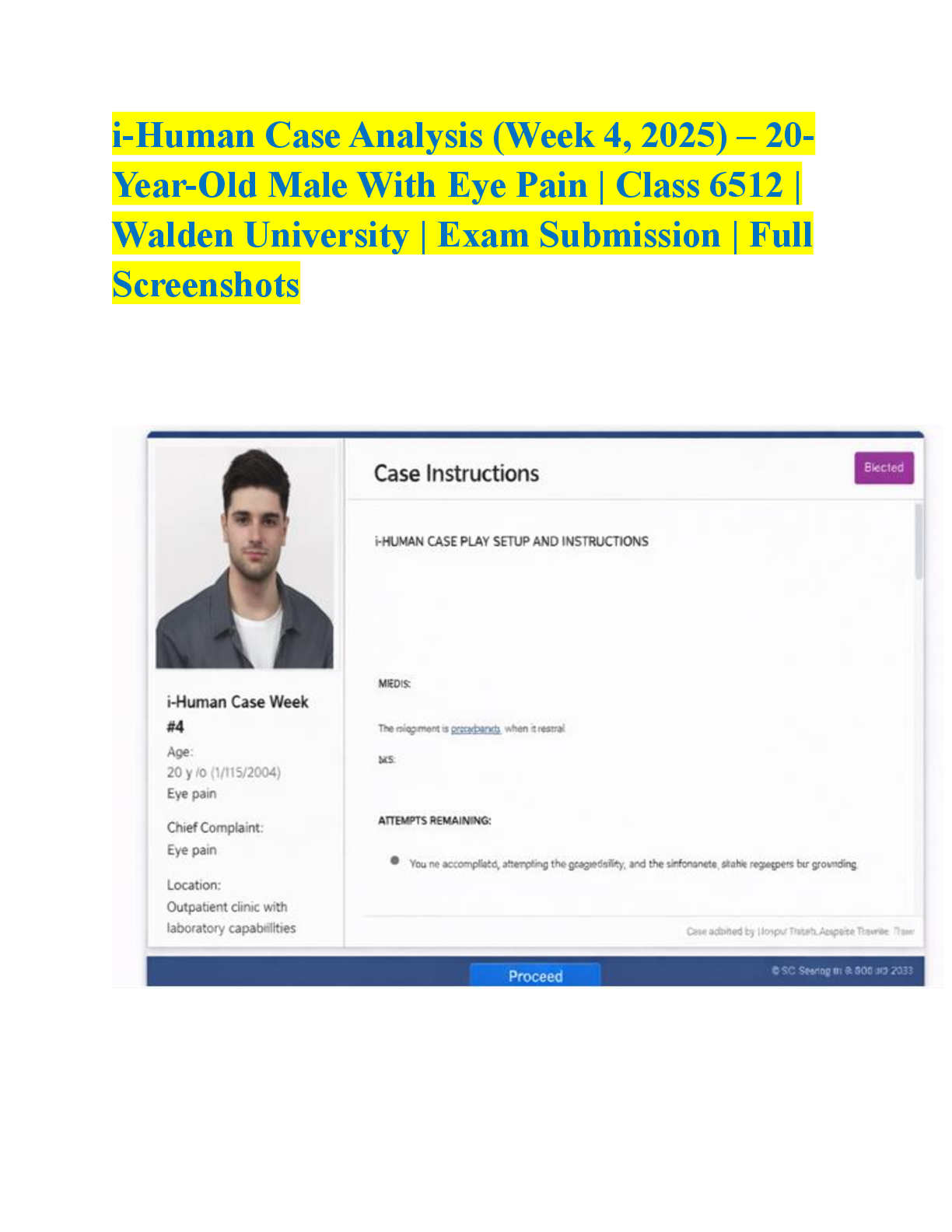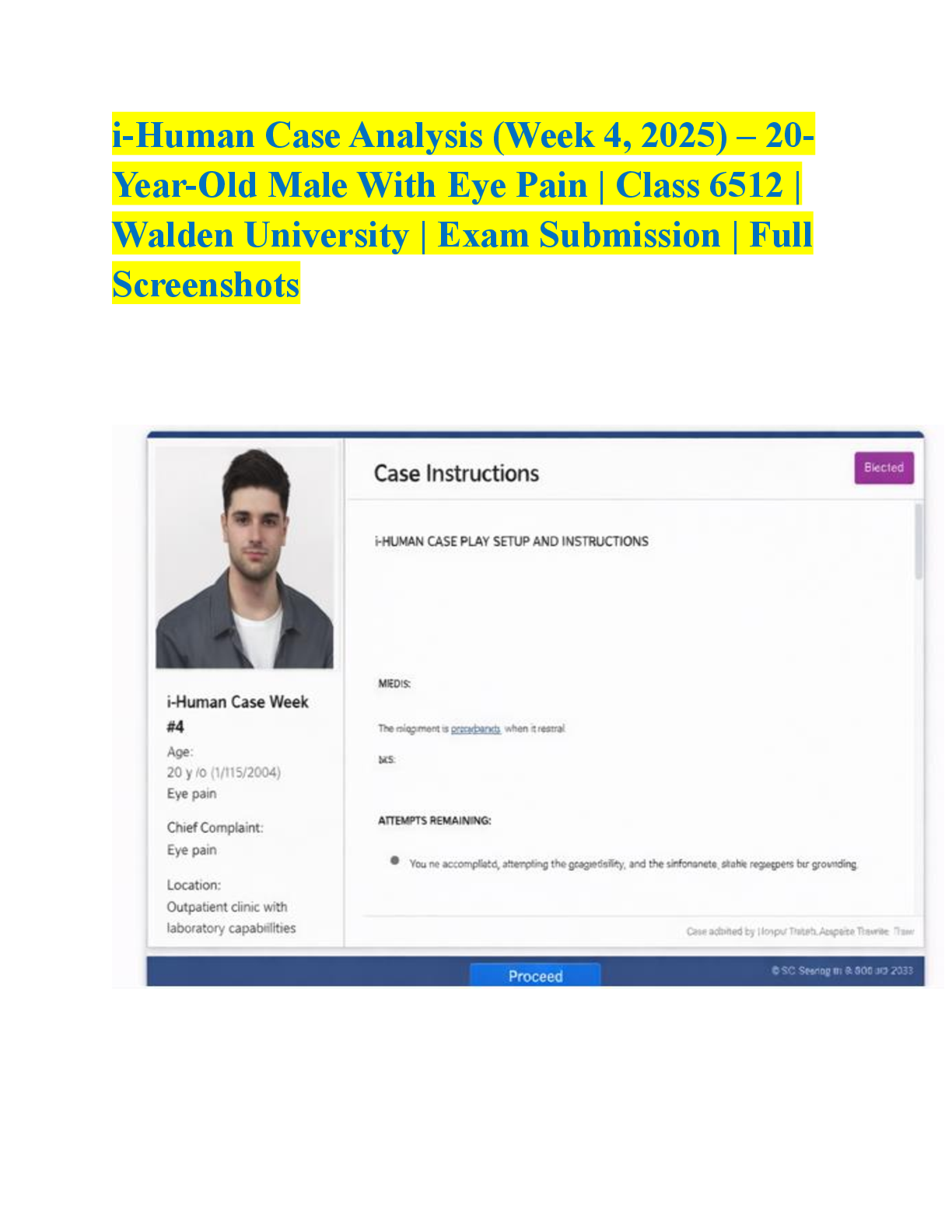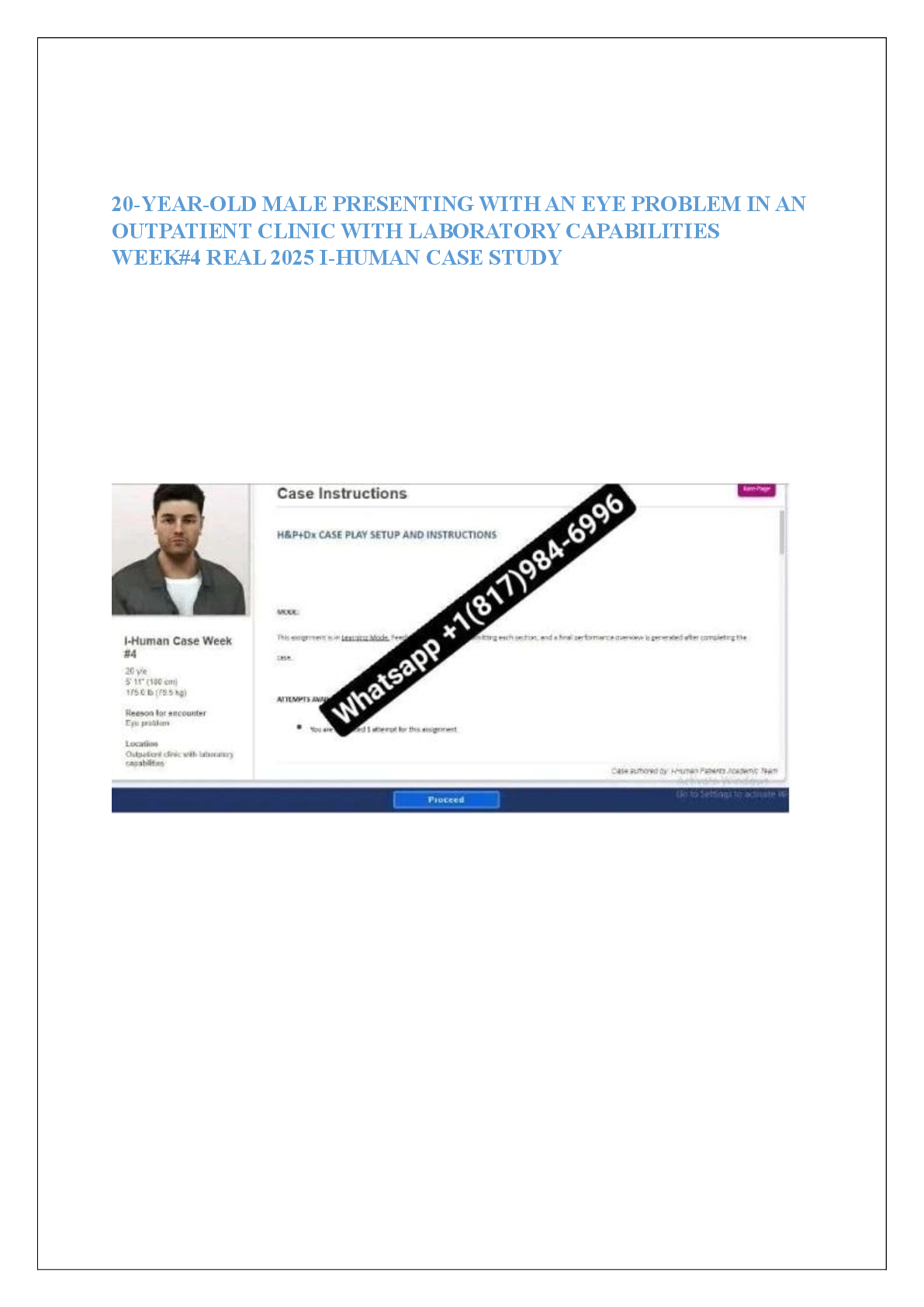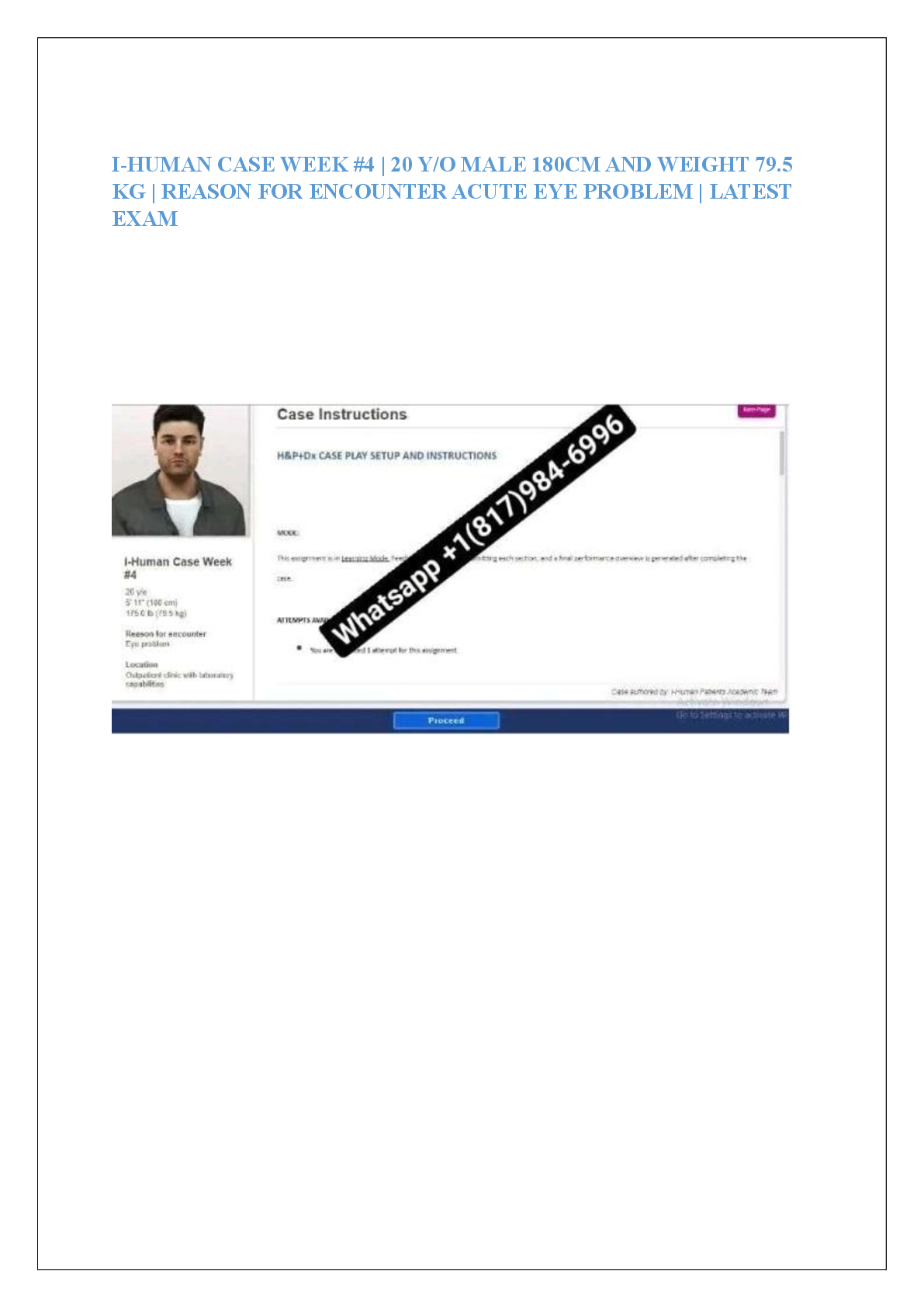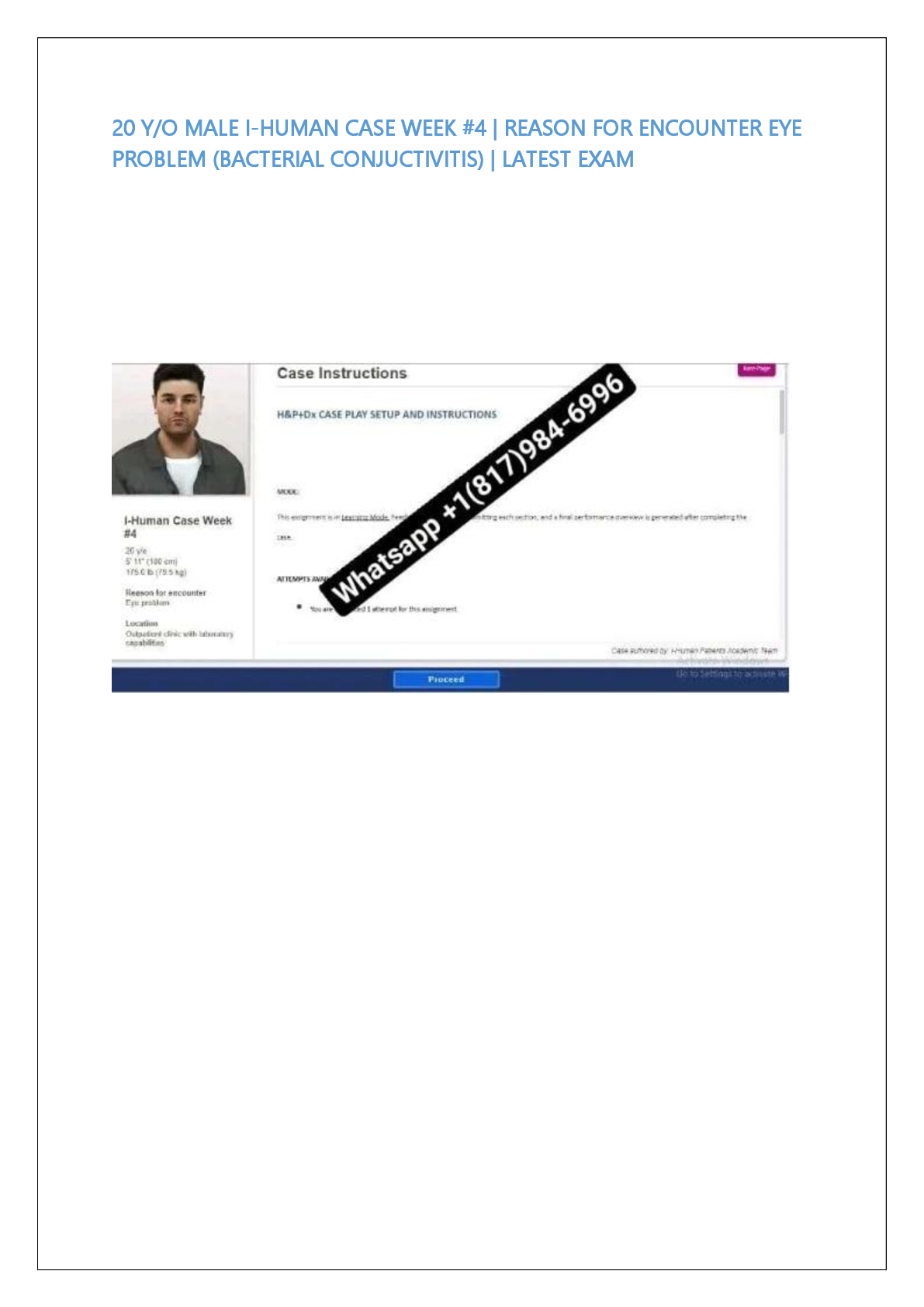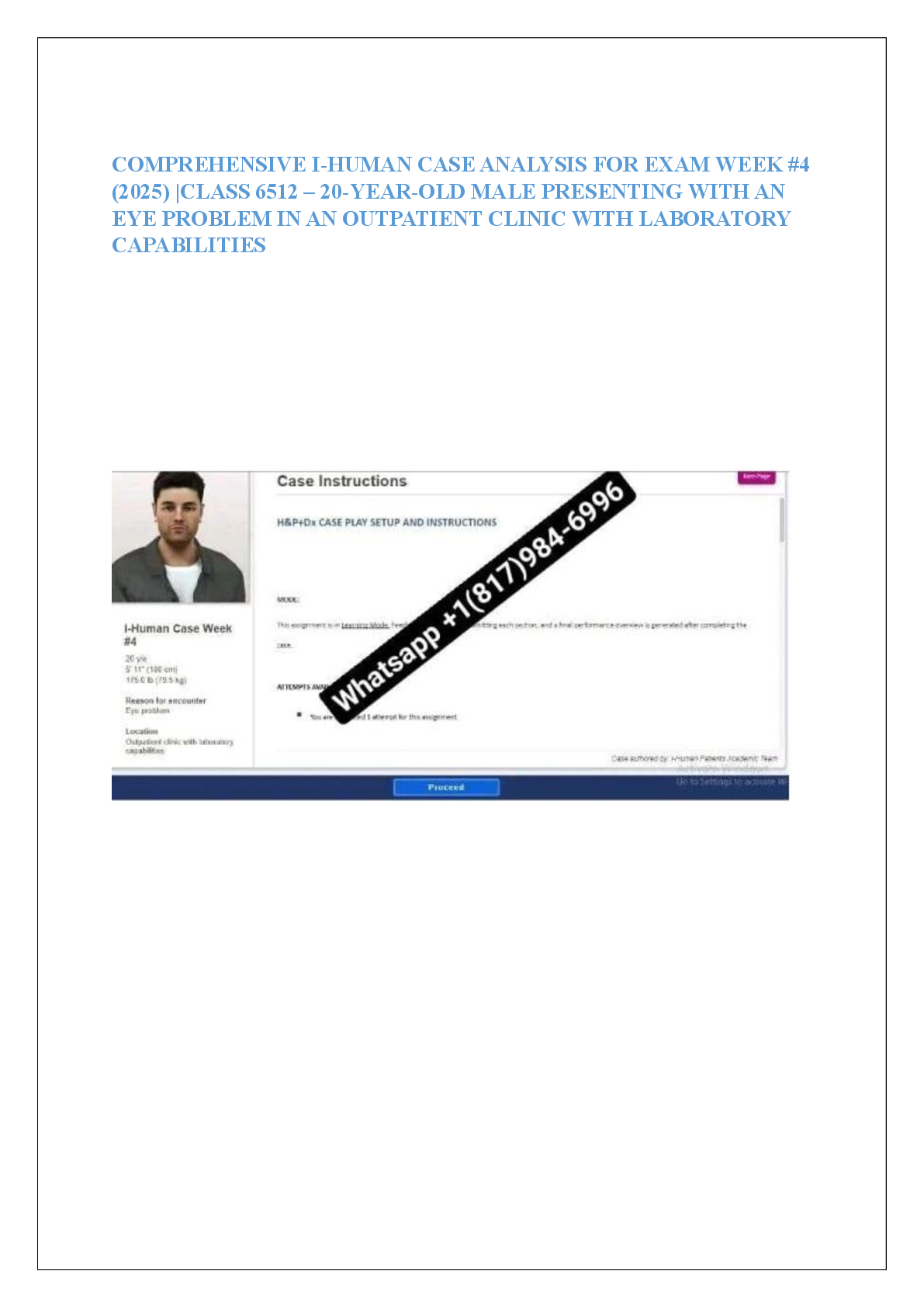Statistics > CASE STUDY > PSY 520 Topic 6 Exercise 2, Chapter 16, 17, 18 (All)
PSY 520 Topic 6 Exercise 2, Chapter 16, 17, 18
Document Content and Description Below
PSY 520 Topic 6 Exercise 2, Chapter 16, 17, 18 16.9 Given the aggression scores below for Outcome A of the sleep deprivation experiment, verify that, as suggested earlier, these mean differences shou ... ldn’t be taken seriously by testing the null hypothesis at the .05 level of significance. Use the computation formulas for the various sums of squares and summarize results with an ANOVA table. 16.10 Another psychologist conducts a sleep deprivation experiment. For reasons beyond his control, unequal numbers of subjects occupy the different groups. (Therefore, when calculating in SS between and SS within, you must adjust the denominator term, n , to reflect the unequal numbers of subjects in the group totals.) (a) Summarize the results with an ANOVA table. You need not do a step-by-step hypothesis test procedure. ΣT2n (b) If appropriate, estimate the effect size with h2. (c) If appropriate, use Tukey’s HSD test (with –n 5 4 for the sample size, n) to identify pairs of means that contribute to the significant F , given that –X0 5 2.60, –X24 5 5.33, and –X48 5 9.50. (d) If appropriate, estimate effect sizes with Cohen’s d. (e) Indicate how all of the above results would be reported in the literature, given sample standard deviations of s 0 5 2.07, s 24 5 1.53, and s 48 5 2.08. 16.12 For some experiment, imagine four possible outcomes, as described in the following ANOVA table. (a) How many groups are in Outcome D? (b) Assuming groups of equal size, what’s the size of each group in Out-come C? (c) Which outcome(s) would cause the null hypothesis to be rejected at the .05 level of significance? (d) Which outcome provides the least information about a possible treatment effect? (e) Which outcome would be the least likely to stimulate additional research? (f) Specify the approximate p -values for each of these outcomes. 16.14 The F test describes the ratio of two sources of variability: that for subjects treated differently and that for subjects treated similarly. Is there any sense in which the t test for two independent groups can be viewed likewise? 17.6 Return to the study first described in Question 16.5 on page 336, where a psychologist tests whether shy college students initiate more eye contacts with strangers because of training sessions in assertive behavior. Use the same data, but now assume that eight subjects, coded as A, B, . . . G, H, are tested repeatedly after zero, one, two, and three training sessions. (Incidentally, since the psychologist is interested in any learning or sequential effect, it would not make sense—indeed, it’s impossible, given the sequential nature of the independent variable—to counterbalance the four sessions.) The results are expressed as the observed number of eye contacts: (a) Summarize the results with an ANOVA table. Short-circuit computational work by using the results in Question 16.5 for the SS terms, that is, SS between 5 154.12, SS within 5 132.75, and SS total 5 286.87. (b) Whenever appropriate, estimate effect sizes with □ 2 p and with d, and conduct Tukey’s HSD test. (c) Compare these results with repeated measures with those in Question 16.5 for independent samples. 17.7 Recall the experiment described in Review Question 16.11 on page 314, where errors on a driving simulator were obtained for subjects whose orange juice had been laced with controlled amounts of vodka. Now assume that repeated measures are taken across all five conditions for each of five subjects. (Assume that no lingering effects occur because sufficient time elapses between successive tests, and no order bias appears because the orders of the five conditions are equalized across the five subjects.) (a) Summarize the results in an ANOVA table. If you did Review Question 16.11 and saved your results, you can use the known values for SS between , SS within , and SS total to short-circuit computations. (b) If appropriate, estimate the effect sizes and use Tukey’s HSD test. 17.8 While analyzing data, an investigator treats each score as if it were contributed by a different subject even though, in fact, scores were repeated measures. What effect, if any, would this mistake probably have on the F test if the null hypothesis were 18.8 For the two-factor experiment described in the previous question, assume that, as shown, mean bar press rates of either 4 or 8 are identified with three of the four cells in the 2 X 2 table of outcomes. 18.11 In what sense does a two-factor ANOVA use observations more efficiently than a one-factor ANOVA does? 18.12 A psychologist employs a two-factor experiment to study the combined effect of sleep deprivation and alcohol consumption on the performance of automobile drivers. Before the driving test, the subjects go without sleep for various time periods and then drink a glass of orange juice laced with controlled amounts of vodka. Their performance is measured by the number of errors made on a driving simulator. Two subjects are randomly assigned to each cell, that is, each possible combination of sleep deprivation (either 0, 24, 48, or 72 hours) and alcohol consumption (either 0, 1, 2, or 3 ounces), yielding the following results: [Show More]
Last updated: 3 years ago
Preview 1 out of 12 pages

Buy this document to get the full access instantly
Instant Download Access after purchase
Buy NowInstant download
We Accept:

Reviews( 0 )
$10.50
Can't find what you want? Try our AI powered Search
Document information
Connected school, study & course
About the document
Uploaded On
Nov 24, 2020
Number of pages
12
Written in
All
Additional information
This document has been written for:
Uploaded
Nov 24, 2020
Downloads
1
Views
177

